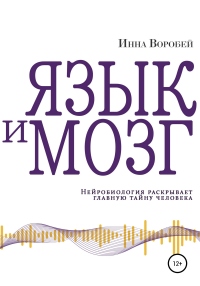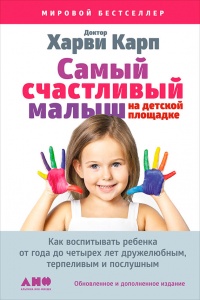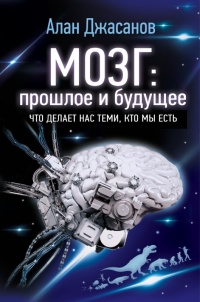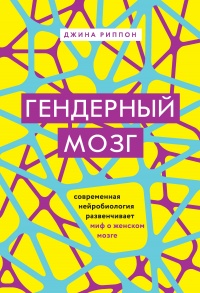Ознакомительная версия. Доступно 21 страниц из 101
Friedmann, N., & Rusou, D. (2015). Critical period for first language: The crucial role of language input during the first year of life. Current Opinion in Neurobiology, 35, 27–34.
Friedrich, M., Wilhelm, I., Born, J., & Friederici, A. D. (2015). Generalization of word meanings during infant sleep. Nature Communications, 6, 6004.
Friston, K. (2005). A theory of cortical responses. Philosophical Transactions of the Royal Society B: Biological Sciences, 360(1456), 815–836.
Froemke, R. C., Merzenich, M. M., & Schreiner, C. E. (2007). A synaptic memory trace for cortical receptive field plasticity. Nature, 450(7168), 425–429.
Fukuchi-Shimogori, T., & Grove, E. A. (2001). Neocortex patterning by the secreted signaling molecule FGF8. Science, 294(5544), 1071–1074.
Fyhn, M., Molden, S., Witter, M. P., Moser, E. I., & Moser, M.-B. (2004). Spatial representation in the entorhinal cortex. Science, 305(5688), 1258–1264.
Galaburda, A. M., LoTurco, J., Ramus, F., Fitch, R. H., & Rosen, G. D. (2006). From genes to behavior in developmental dyslexia. Nature Neuroscience, 9(10), 1213–1217.
Galgali, A. R., & Mante, V. (2018). Set in one’s thoughts. Nature Neuroscience, 21(4), 459–460.
Gallistel, C. R. (1990). The organization of learning. Cambridge, MA: MIT Press.
Gaser, C., & Schlaug, G. (2003). Brain structures differ between musicians and nonmusicians. Journal of Neuroscience, 23(27), 9240–9245.
Gathercole, S. E., Pickering, S. J., Knight, C., & Stegmann, Z. (2004). Working memory skills and educational attainment: Evidence from national curriculum assessments at 7 and 14 years of age. Applied Cognitive Psychology, 18(1), 1–16.
Geary, D. C. (2011). Cognitive predictors of achievement growth in mathematics: A five-year longitudinal study. Developmental Psychology, 47(6), 1539–1552.
Genzel, L., Rossato, J. I., Jacobse, J., Grieves, R. M., Spooner, P. A., Battaglia, F. P., Morris, R. G. M. (2017). The yin and yang of memory consolidation: Hippocampal and neocortical. PLOS Biology, 15(1), e2000531.
George, D., Lehrach, W., Kansky, K., Lázaro-Gredilla, M., Laan, C., Marthi, B., Phoenix, D. S. (2017). A generative vision model that trains with high data efficiency and breaks text-based CAPTCHAs. Science, 358(6368).
Gerber, P., Schlaffke, L., Heba, S., Greenlee, M. W., Schultz, T., & Schmidt-Wilcke, T. (2014). Juggling revisited – a voxel-based morphometry study with expert jugglers. NeuroImage, 95, 320–325.
Gergely, G., Bekkering, H., & Király, I. (2002). Rational imitation in preverbal infants. Nature, 415(6873), 755.
Gergely, G., & Csibra, G. (2003). Teleological reasoning in infancy: The naïve theory of rational action. Trends in Cognitive Sciences, 7(7), 287–292.
Gerhand, S., & Barry, C. (1999). Age of acquisition, word frequency, and the role of phonology in the lexical decision task. Memory and Cognition, 27(4), 592–602.
Gertler, P., Heckman, J., Pinto, R., Zanolini, A., Vermeersch, C., Walker, S., Grantham-McGregor, S. (2014). Labor market returns to an early childhood stimulation intervention in Jamaica. Science, 344(6187), 998–1001.
Glass, A. L., & Kang, M. (2018). Dividing attention in the classroom reduces exam performance. Educational Psychology, 39(3), 395–408.
Goldman-Rakic, P. S. (1995). Cellular basis of working memory. Neuron, 14(3), 477–485.
Golestani, N., Molko, N., Dehaene, S., Le Bihan, D., & Pallier, C. (2007). Brain structure predicts the learning of foreign speech sounds. Cerebral Cortex, 17(3), 575–582.
Golub, M. D., Sadtler, P. T., Oby, E. R., Quick, K. M., Ryu, S. I., Tyler-Kabara, E. C., Yu, B. M. (2018). Learning by neural reassociation. Nature Neuroscience, 21(4), 607–616.
Goodfellow, I. J., Pouget-Abadie, J., Mirza, M., Xu, B., Warde-Farley, D., Ozair, S., Bengio, Y. (2014). Generative adversarial networks. arxiv.org/abs/1406.2661.
Goodman, C. S., & Shatz, C. J. (1993). Developmental mechanisms that generate precise patterns of neuronal connectivity. Cell, 72 Suppl, 77–98.
Goodman, N. D., Ullman, T. D., & Tenenbaum, J. B. (2011). Learning a theory of causality. Psychological Review, 118(1), 110–119.
Gopnik, A., Glymour, C., Sobel, D. M., Schulz, L. E., Kushnir, T., & Danks, D. (2004). A theory of causal learning in children: Causal maps and Bayes nets. Psychological Review, 111(1), 3–32.
Gopnik, A., Meltzoff, A. N., & Kuhl, P. K. (1999). The scientist in the crib: What early learning tells us about the mind. New York, NY: William Morrow.
Gottlieb, J., Oudeyer, P.-Y., Lopes, M., & Baranes, A. (2013). Information-seeking, curiosity, and attention: Computational and neural mechanisms. Trends in Cognitive Sciences, 17(11), 585–593.
Goupil, L., Romand-Monnier, M., & Kouider, S. (2016). Infants ask for help when they know they don’t know. Proceedings of the National Academy of Sciences, 113(13), 3492–3496.
Grainger, J., & Whitney, C. (2004). Does the huamn mnid raed wrods as a wlohe? Trends in Cognitive Sciences, 8(2), 58–59.
Grantham-McGregor, S. M., Powell, C. A., Walker, S. P., & Himes, J. H. (1991). Nutritional supplementation, psychosocial stimulation, and mental development of stunted children: The Jamaican Study. Lancet, 338(8758), 1–5.
Green, C. S., & Bavelier, D. (2003). Action video game modifies visual selective attention. Nature, 423(6939), 534–537.
Groen, G. J., & Parkman, J. M. (1972). A chronometric analysis of simple addition. Psychological Review, 79(4), 329–343.
Grothendieck, A. (1986). Récoltes et semailles: Réflexions et témoignage sur un passé de mathématicien. quarante-deux.org/archives/klein/prefaces/Romans_1965–1969/Recoltes_et_semailles.pdf.
Gruber, M. J., Gelman, B. D., & Ranganath, C. (2014). States of curiosity modulate hippocampus-dependent learning via the dopaminergic circuit. Neuron, 84(2), 486–496.
Guerguiev, J., Lillicrap, T. P., & Richards, B. A. (2017). Towards deep learning with segregated dendrites. ELife, 6, e22901.
Gullick, M. M., & Wolford, G. (2013). Understanding less than nothing: Children’s neural response to negative numbers shifts across age and accuracy. Frontiers in Psychology, 4, 584.
Gweon, H., Tenenbaum, J. B., & Schulz, L. E. (2010). Infants consider both the sample and the sampling process in inductive generalization. Proceedings of the National Academy of Sciences, 107(20), 9066–9071.
Ознакомительная версия. Доступно 21 страниц из 101
























